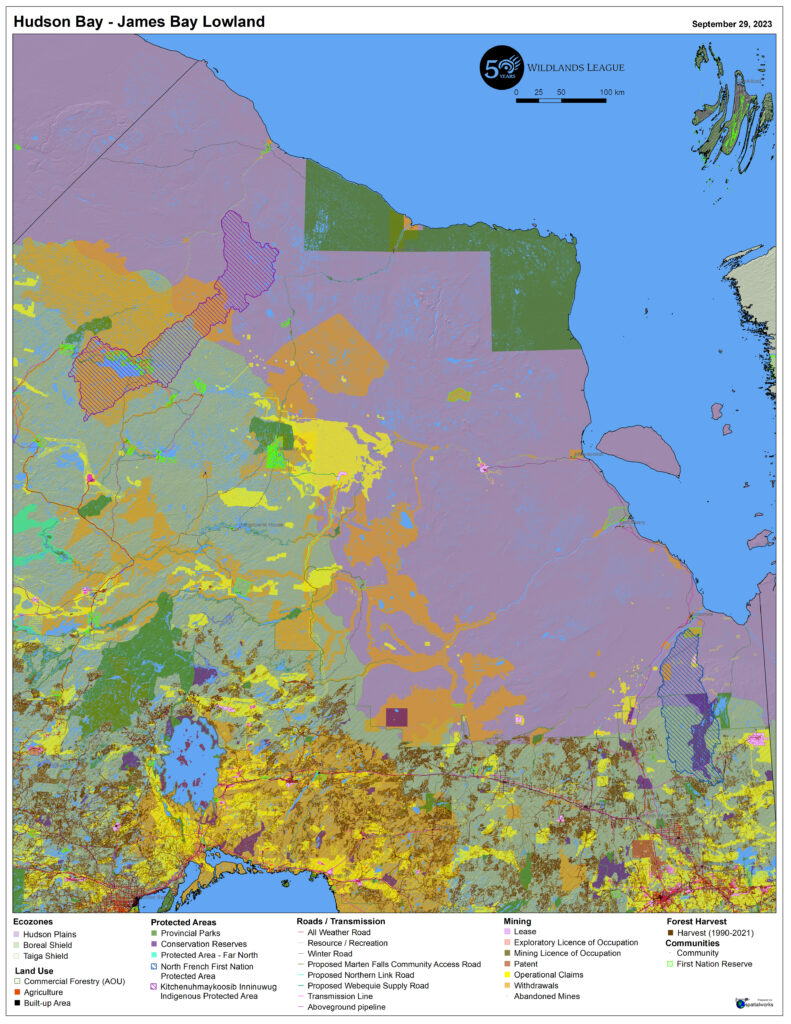Backgrounder
Early exploration includes drilling, blasting, line cutting, the clearing of lands & the creation of camps, staging areas and mining trails. They often require continuous helicopter flyovers and/or snowmobiles.
Mining trails or roads to facilitate mineral exploration are exempt from oversight under the Public Lands Act. Wildlands League has not observed any limits placed on the creation of mining trails and cutlines (fragmenting features) and other activities in the Ring of Fire area in response to cumulative impacts concerns on threatened wildlife, peatlands or watersheds.
Rehabilitation after drilling programs is minimal. Provincial Standards for Early Exploration require drill holes be capped and materials be kept 30m away from waterbodies.
On April 1, 2021 Attawapiskat, Fort Albany and Neskantaga First Nations declared a moratorium on “any development in or to facilitate access to the Ring of Fire area”.
There is a feverish rush to develop critical minerals in Ontario, Canada and around the world. Canada certainly does have a major role to play in helping the world shift to these climate-saving technologies. But in doing so, we also need a thoughtful approach that recognizes the potential of mineral development to release more carbon than it ultimately saves and to cause unacceptable impacts on forests, wetlands, and communities. This is one of the reasons why Wildlands League joined with 14 other groups in creating Principles for a Green Energy Transition.
Scientists at Wildlife Conservation Society Canada have updated the carbon stock numbers in peatlands within the Ring of Fire area (with the increased mining claims). Approximately 560 million tonnes of carbon are stored which is equivalent to just over 2 billion tonnes of CO2. These carbon stores are irrecoverable. Keeping them undisturbed is critical to meeting global climate goals. Once lost, they cannot be recovered by 2050.
If only 3% of the Ring of Fire is developed, this would result in about 62 million tonnes of CO2 equivalent, just under all of the emissions reductions Canada did from 2005-2021.
Data sources: Ontario Geologic Survey Mining Claims Data found at https://www.geologyontario.mndm.gov.on.ca/ogsearth.html#mining-claims
More resources:

